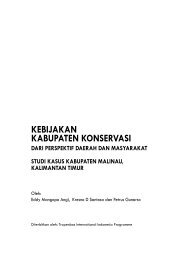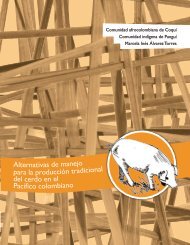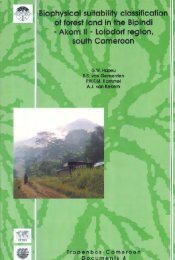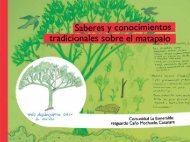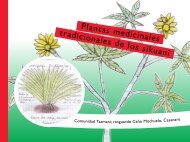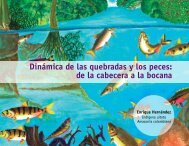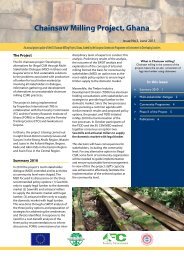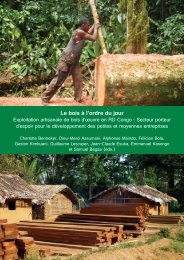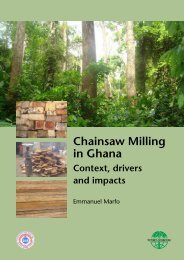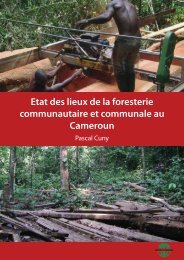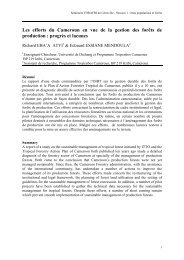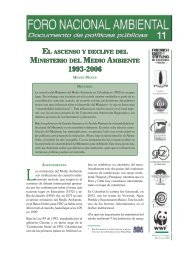Download the publication - Tropenbos International
Download the publication - Tropenbos International
Download the publication - Tropenbos International
Create successful ePaper yourself
Turn your PDF publications into a flip-book with our unique Google optimized e-Paper software.
Biodiversity hotspots and conservation priorities in Central African rain forests<br />
Figure 5.7 Ordinary kriging map showing <strong>the</strong> distribution of GHI scores and conservation hotspots within<br />
<strong>the</strong> Campo-Ma’an rain forest. The following GHI values are defined for <strong>the</strong> various conservation<br />
classes (Hawthorne, 1996): Very high conservation value for GHI > 200; High conservation<br />
value (150 ≤ GHI < 200); Moderate conservation value (100 ≤ GHI < 150); Low conservation<br />
value (50 ≤ GHI < 100) and very low conservation value (GHI < 50).<br />
5.4. DISCUSSION<br />
Species richness and endemism<br />
The Campo-Ma’an area is characterised by a rich and diverse flora with more than<br />
2297 species of vascular plants, ferns and fern allies (Annex 3). The site has about 114<br />
endemic plant species, 29 of which are restricted to <strong>the</strong> area, 29 also occur in <strong>the</strong><br />
southwestern part of Cameroon (Kribi-Akom II-Bipindi and Lolodorf areas) and 56<br />
o<strong>the</strong>rs that also occur in o<strong>the</strong>r parts of Cameroon. Fur<strong>the</strong>rmore, 540 species recorded<br />
are Lower Guinea endemics, 1123 species are Guineo-Congolian endemics and 105<br />
species are Guinea endemics. Most diverse genera were understorey small trees,<br />
shrubs and herbs. The number of endemic plant species is relatively high considering<br />
<strong>the</strong> size of <strong>the</strong> area, and more than 75% of <strong>the</strong> current forest cover was characterised<br />
ei<strong>the</strong>r by very high, high or average GHI values (Figure 5.7). Fur<strong>the</strong>rmore, <strong>the</strong><br />
distribution patterns of strict and narrow endemic species showed a high concentation<br />
of <strong>the</strong>se species in <strong>the</strong> submontane forest between Ebianemeyong and Akom II, in<br />
Dipikar Island, and in <strong>the</strong> forests around Massif des Mamelles, Lobe, Mont<br />
d’Eléphant and Zingui. Surprisingly, <strong>the</strong> mixed evergreen and semi-deciduous forest<br />
in <strong>the</strong> Ma’an area showed a relatively low concentration of <strong>the</strong>se species (Figure 5.1).<br />
One of <strong>the</strong> explanations for <strong>the</strong> high occurrence of endemics might stem partly from<br />
<strong>the</strong> fact that <strong>the</strong> area falls within a series of postulated rain forest refugia in Central<br />
99



